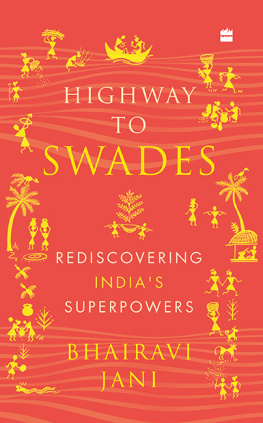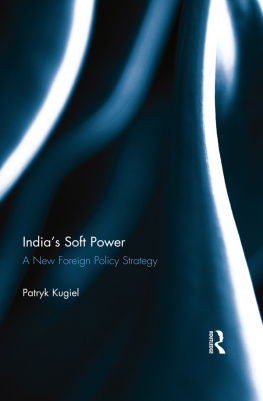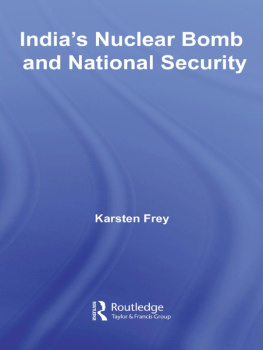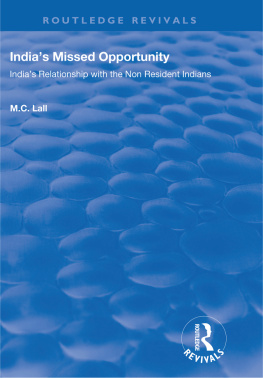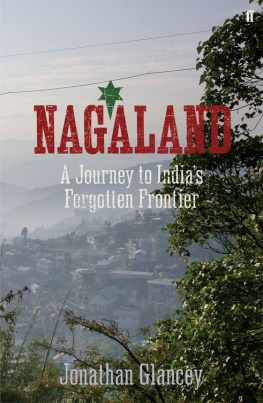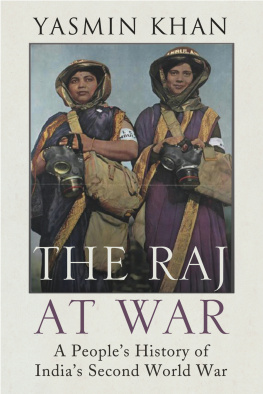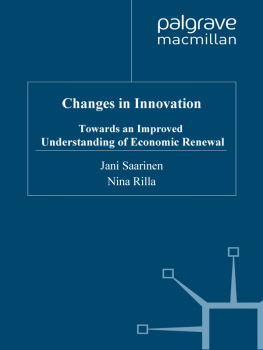Table of Contents


To India
To Indians
To my parents Anjani and Tushar, who taught me to dream
To my husband Alok, who gave me the confidence to write
To my friend Ejji, who always wanted me to write
Contents
I f there was something common that ancient chroniclers like Faxian (fourth century CE), Hiuan Tsang (seventh century CE), Ibn Batuta (fourteenth century CE) and Duart Barbosa (sixteenth century CE) took away from Indiait was capturing the magnificence of this country in a single canvas with two distinct end points: the start date and the end date of their journey. Their canvases were some of the most precious gifts that our generation has inherited because they were end-to-end documentation of Indias vast ethnographic profile with vivid descriptions of its geography and social order in a specific time period.
Inspired by these chroniclers, Bhairavi, Ejji, Venkat and I started our Highway to Swades journey on 16 March 2014 at St. Thomas Mount, Chennaithe very spot where Lt Col. William Lambton started the first trigonometrical survey of India in the year 1802. We ended our journey on 5 May 2014 in Mahabalipuram to mark our respect to the ancient chroniclers of India. While our overall idea was to capture India in the summer of 2014 in a single canvas, little did we expect our people and our culture to mimic the same characteristics as they have for eons.
After meeting and interviewing hundreds of diverse groups of people from Kashmir to Kanyakumari and from Kohima to Kutch, we learnt a few simple facts about Indians. We learnt that, in India, everyone strives to make life better and yet are content at the same time. We were amazed that no one asked us who we are, where do we come from, what caste or religion we belong to or why we were interviewing them. Everyone was happy meeting uswe did not see any social or religious tensions. India was in complete peace and harmony, despite it being the general election time.
While all of us were passionately soaking in India during the fifty-one-day, 18,181-km journey, Bhairavi was not just soaking it in but was also experiencing it all with empathy. Ejji and I were for the most part engaged in figuring out what is India, who are our people, where did all this come from. But Bhairavi was a keen listener who was taking it all in like a blotting paper. At times we would see a huge smile on her face and another moment inexplicable tears. We never understood for a long time what she was processing so silently.
We eventually realized that her mind was always working on the why questions. She would break her silence at breakfast and begin narrating: why is India behaving the way we said it was behaving; why are none of the interviewees asking us who we are; why are people welcoming us with open arms; why are people so happy despite being so poor; why do people strive to grow and are content at the same time; why do people across the country have the same wish list for a better future? By mid-point in the journey it was clear that she had a greater purpose in doing this journey and a deeper call for action. I believe that this book is just the beginning.
Mahesh Sriram,
founder, I-India
I t was late April and a warm breeze was brushing my face. From the window of my hotel room I could see a sandstorm brewing on the not so distant dunes of the Thar Desert. The sun was setting on the horizon. I had never felt so much in touch with myself as I did that evening. As the rays of the setting sun lit up the fort of Jaisalmer in a deep yellow-golden hue, I found myself ablaze with the elemental flame of my soul and the idea of a book took shape.
Indeed, it had been on the banks of the Ganga at Rishikesh, a year or so ago, that I had first felt like sharing my ideas with the world. But I never had in mind a book. I was thinking in terms of blogs or articles then.
In the months that followed my Jaisalmer moment of epiphany I remained hesitant, fighting my own doubts about whether I really had something useful to say, and whether I would be able to write. Then, later that year, in the peak of winter, I visited Kashmir. While caught in a snowstorm on the rolling meadows of Gulmarg, I finally let go of my inhibitions and penned down some thoughts.
I had started writing, but there was still a want of courage. I felt scared initially to put my ideas out there in the world. A magical Kathakali performance in the backwaters of Kerala helped me conquer this fear. I think it was the conviction in the eyes of the artiste who was performing a story from the Hindu epic of Ramayana, that gave me the courage to believe in the story I wanted to tellthe story of the many highways I took to Swades and what I learnt from those travels about India and Indians. Eventually, on a spring day, inside a sacred forest in Meghalaya, on the forest floor covered with rhododendrons, I sat down and wrote the first chapter of this book in a small diary while my friends took a guided tour of the forest.
In a manner of speaking, the journey of this book from an idea to its present shape was inspired and aided by the people and landscapes of India. Therefore, my foremost and deepest gratitude for the book is to India and Indians.
I am an entrepreneur by profession and had never dabbled in writing. I shared my dream of writing a book with my parents, Anjani and Tushar. As always, they encouraged me to pursue it. I am thankful to God that I am born to parents who believe in dreaming big and chasing your dreams. They are the wind beneath my wings always. I wasnt sure how to begin but Rinku Paul, who had written a chapter about me in her book Daughters of Legacy, came to the rescue and introduced me to Kanishka Gupta from Writers Side.
I still remember the day I went to meet Kanishka, whom I fondly call Kan. I was scared. What does a literary agent look like? What will he ask? How will this play out? I was extremely nervous and asked my husband, Alok, to accompany me to the meeting. Sipping coffee at the Starbucks at Cyber Hub in Gurugram, Kan, my husband and I discussed this book. From that day, and through the three years it took to bring this book to its final shape, my husband Alok has walked the road with me. I would often discuss my ideas for a chapter with him and he would challenge my hypothesis and at times also proofread a section. I always wanted to marry someone who would walk the road with me, and I thank my stars that Alok is just that person.
From writing a proposal to choosing the publishing house, Kans vast experience has guided my nascent journey as a writer. Without him I would not be here! We signed the contract with HarperCollins in the early weeks of the pandemic in 2020. Since I was in our home in Munsyari in the Himalaya and there was a nationwide lockdown for several weeks, I had to vastly rely on my notes, journals, videos and the internet for research. Through those initial months of the pandemic, while managing my work remotely, addressing the challenges of broken supply chains for our customers and worrying endlessly about the safety of our employees, I kept writing. My beloved dog Sheeba fell ill during this period, and for several months I worked during the day and researched for the book while staying up nights with Sheeba. If there were any romantic notions I had about writing a book in a secluded village staring out of my window at the Himalaya, they were shattered almost every night. Sheeba kept it real for me!
When I was finally ready with the first draft of the manuscript, the prolific Narayani Basuauthor of the book

